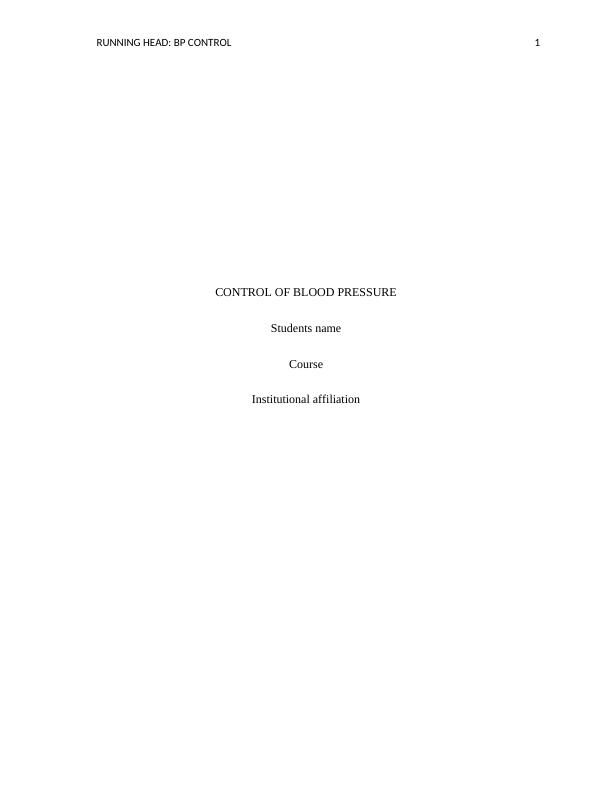Control of Blood Pressure - Mechanisms and Treatment
4 Pages785 Words50 Views
Added on 2023-06-11
About This Document
This article discusses the mechanisms of blood pressure control, including the baroreceptor reflex and renin-angiotensin-aldosterone system. It also covers the treatment options for hypertension. The article is relevant for students studying anatomy, physiology, and related courses.
Control of Blood Pressure - Mechanisms and Treatment
Added on 2023-06-11
ShareRelated Documents
End of preview
Want to access all the pages? Upload your documents or become a member.
Role of RAAS in Cardiovascular System | Essay
|5
|1258
|25
Physiology for Emergency Care: Short Answer Quiz
|31
|5191
|114
Neuroscience & Biobehavioral Reviews
|13
|2755
|14
The cardiovascular system completes
|4
|938
|15
Acute Exacerbation of the Chronic Heart Failure - Pathophysiology and Nursing Strategies
|7
|1600
|240
Chronic Systolic Heart Failure: Pathogenesis, Nursing Strategies, and Drug Mechanisms
|7
|2149
|240


